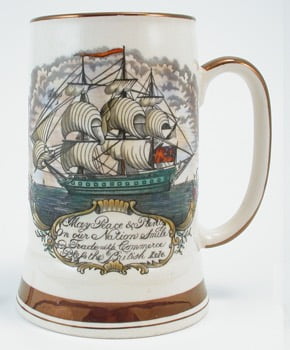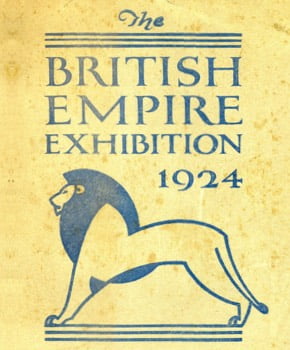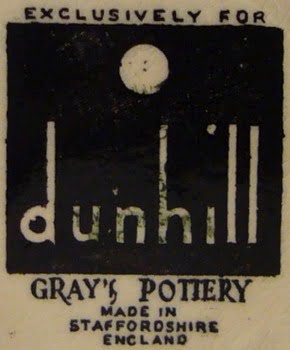Gray's Pottery
Welcome to the Gray's Pottery website. This site is intended for researchers of the history and products of Gray's Pottery, as well as for anyone with a general interest in Stoke-on-Trent, its industry and its history.

Ware Suppliers
Over 100 Years later....
The original site was launched in 2007, being the centenary of the founding of Gray’s Pottery, and it was developed & maintained by Andrew Clarke of webmozaic. It has since grown to explore Gray’s Pottery in detail, to describe and illustrate its products and to expand its database of patterns.
We welcome enquiries and contributions in order to develop a much wider and accurate understanding of what was an important, successful and innovative 20th century English pottery.
Latest Update - May 2024
Newly recorded patterns and subjects added, in line with regular updating practice.
A new named pattern has been added: CIRCUS, number A5023. The back of the plate shown for this newly-recorded pattern also has A5158 marked and fits the style of the plate already shown for this pattern. This is yet another mystery in the history of Gray’s Pottery – and likely to remain so!
The search facility using keywords – such as ‘humidor’ or ‘storage jar’ – continues in order to enable website searchers to locate information more easily.
Overview
Gray’s Pottery is the most common name for the products of a company started by Albert Edward Gray (1871-1959) in Stoke-on-Trent, England in 1907. AE Gray’s Pottery often carried a backstamp which included the phrase HAND-PAINTED, for hand-decorated patterns were the very essence of the majority of the thousands of designs produced during the firm’s existence.
After starting his business as a wholesaler of useful ceramic items, Gray launched a production operation in Hanley, Stoke-on-Trent, in 1912. He sourced undecorated pottery, so called ‘white ware’, from various suppliers and, using the talents of highly-accomplished in-house designers such as Susie Cooper and Sam Talbot, developed a highly successful decorating business.
Even though the company was relatively small when compared with the mainstream pottery companies in North Staffordshire (it employed less than 100 people at its height in the 1930s), Gray’s Pottery punched well above its weight! Its 1930s’ slogan ‘The Pottery of Distinction’ was well-chosen and many of the firm’s designs were to be found at important national and international exhibitions as well as being included in influential design registers.
Gray’s Pottery was as responsive to fashion as anyone else in the industry and sought to supply customers new and old, at home and abroad, with prompt attention. When viewed with the benefit of hindsight, the company’s range of products and designs is staggering. Besides the obvious output of cups and saucers, plates and bowls, jugs/pitchers and teapots, vases and urns, there are egg-cups, dog-bowls, jelly-moulds, bird-feeders and juice squeezers. There are decorations covering floral designs, lustres, banded patterns, slipware, geometric jazzy designs and print and enamel patterns. The products also include wall pockets for flowers, large animal studies, lustre decorated 18th-century figures, table lamps and hors d’oeuvre sets complete with wooden trays. And all this from a firm that manufactured for a mere 50 years, including the severely disruptive periods of two world wars.
Gray’s Pottery was a typical family concern, a characteristic commonplace among Stoke-on-Trent’s potteries in years past. Founder AE Gray brought his son Robin into the works at an early age, his daughter Joan contributed a number of designs in the 1930s, nephew John ran the London showroom before the Second World War and nephew Jack Bond contributed various designs, including the firm’s distinctive ‘Clipper’ backstamp. This family spirit extended to the shop-floor and there were many examples of relations working alongside each other.
Post-war ceramic decoration changed enormously, due largely to two developments. Firstly, from a pure design point-of-view, the public was looking for something new and fresh following years of restraint. Secondly, the pottery manufacturers wanted to press ahead with cheaper, automated processes of decoration.

Disclaimers
This is not a commercial site and will not be trading in Gray’s ware, nor will there be any discussions of market prices of such ware.
The 64-page book Hand-painted, Gray’s Pottery, originally produced for an exhibition of Gray’s Pottery at The Potteries Museum, Stoke-on-Trent, England in 1982, was last updated and enhanced in 1992 (ISBN 1 874414 00 9). This regularly updated website has been created with the book as its foundation: it supplants the backstamp details and the pattern references in the book.
P & K Niblett respectfully request that anyone using material from this site acknowledges its provenance, especially in the use of contemporary periodical reports (eg Pottery Gazette) now owned by Lema Publishing Ltd.
Note that this site has no connection with, and does not relate to, Gray’s Pottery products of either Aldridge or Shenstone in South Staffordshire.








